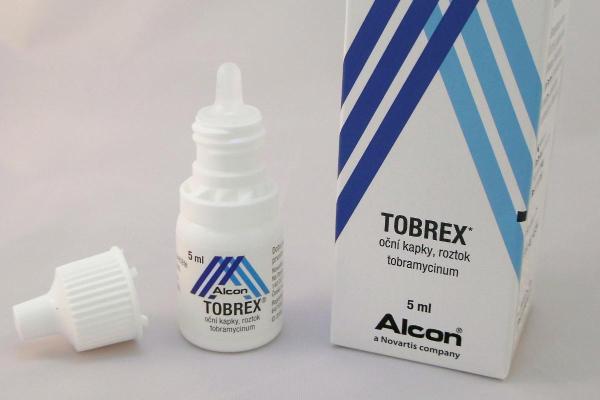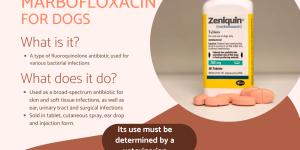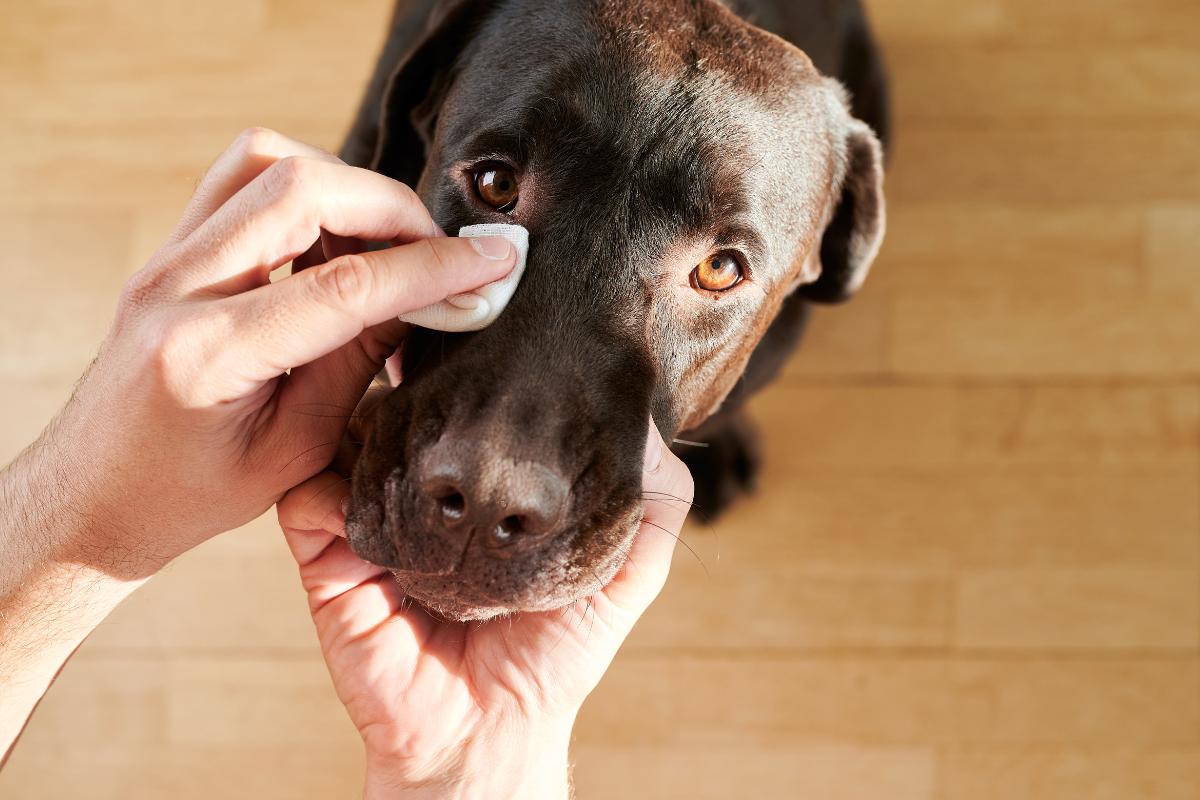Tobramycin for Dogs - Uses, Dosage and Side Effects



See files for Dogs
Tobramycin is an antibiotic drug which is a type of aminoglycoside. This means it contains amino acids as part of its structure. It is sold under various brand names, with Tobrex being one of the most common. While is is both a broad-spectrum antibiotic and on the World Health Organization's List of Essential Medicines, it's main use in dogs is to treat ophthalmic infections. For this reason, it is most commonly administered as tobramycin eye drops for dogs.
At AnimalWised, we better understand tobramycin for dogs. We look at the uses, dosage and side effects of the antibiotic, as well as the possible contraindications of Tobrex.
What is tobramycin for dogs?
As stated in the introduction, tobramycin is a type of aminoglycoside antibiotic. Being aminoglycoside, it is a Gram-negative antibacterial medication that inhibits protein synthesis. Aminoglycosides are not able to be absorbed by the gastrointestinal tract. While tobramycin can be given intravenously, it is most commonly used via the ophthalmic route in the form of eye drops.
Tobramycin is a drug which is marketed for human use. It is also frequently prescribed in veterinary medicine. This is thanks to the use of cascade prescription. This is when a drug that is not authorized for a specific animal species is prescribed to meet various therapeutic needs. Although not approved by the FDA for veterinary use, the American Veterinary Medical Association has mentioned its use in animal applications[1].
Tobrex is not the only trade name of drugs which have tobramycin as the active ingredient. Others include Nebcin, Tobi and Tobradex. The latter is a combination drug which also has dexamethasone, providing an additional anti-inflammatory effect.
You can discover another drug used for ophthalmic bacterial infections with our article on Polytrim eye drops for dogs.

What is tobramycin used for in dogs?
Tobrex and other tobramycin drugs are used to treat superficial bacterial infections of the eye caused by various species of bacteria. Tobramycin is a broad-spectrum antibiotic belonging to the aminoglycoside family. It is a bactericidal antibiotic that is effective in treating both infections caused by gram-positive and gram-negative bacteria. Gram-positive bacteria against which tobramycin is effective include:
- Staphylococcus aureus
- Streptococcus spp.
- Corynebacterium
- Bacillus spp.
It can also treat infections caused by the following gram-negative bacteria
- Pseudomonas spp.
- Klebsiella spp.
- Moraxella spp.
- Proteus spp.
- Escherichia coli
Can you use tobramycin for dogs without vet prescription?
You should never give your dog human medications without specific instruction from the veterinarian. While it is considered safe, tobramycin is a strong antibiotic and can only be purchased with a prescription. It is not an over-the-counter medication. Tobramycin is only used to treat certain types of bacteria. Even if you know your dog has a bacterial infection, it will require the veterinarian to determine the type and subsequent treatment options.
Uses of tobramycin for dogs
As we mentioned in the previous section, tobramycin eye drops for dogs are used to treat superficial bacterial infections of the eye. Specifically, it is used as therapy in the following ocular pathologies:
- Bacterial-type conjunctivitis: bacterial conjunctivitis in dogs are usually processes secondary to other disorders, such as trauma (due to fights, scratches, etc.), eyelid disorders (such as entropion, ectropion or blepharitis) or other types of conjunctivitis in dogs. Under normal conditions, the eye has a microbiota made up of microorganisms that do not cause any ocular alteration. When an imbalance occurs in the eye's defensive system due to any of the alterations that we have described, bacterial proliferation and overgrowth occurs and leads to infection. The bacterial genera most frequently implicated in canine conjunctivitis are Staphylococcus and Streptococcus, bacteria which are sensitive to the action of tobramycin.
- Other external eye infections: including keratitis, keratoconjunctivitis or blepharitis caused by bacteria sensitive to the action of tobramycin.
- Corneal ulcers: even if there is no infection present with the dog's corneal ulcer, it is important to administer an antibiotic through the eye to prevent possible future infections and promote healing. In the case of complicated ulcers, it is essential to establish a specific antibiotic treatment as this shows there is already an infection.
- Pre and post-surgical prophylaxis: being a broad-spectrum antibiotic, it can also be used to prevent eye infections before and after ophthalmic surgeries. Surgeries can cause ocular bleeding, something you can learn more about with our article on why a dog has blood in their eye.
While it is mostly used for various eye disorders in dogs, it is possible that tobramycin can be used for other purposes. Since tobramycin eye drops for dogs are in a liquid solution, they may be used to treat otitis in dogs which is caused by a bacterial infection. It may also on very rare occasions be used to treat systemic infections, but only where other, more effective antibiotics are unsuitable.
Learn more about canine otitis with our article asking can an ear infection kill a dog?

Tobramycin for dogs dosage
Tobramycin is found in various drugs, but the applications for dogs is usually sold in the following preparations:
- Eye drops
- Ointment
In veterinary medicine, tobramycin is generally prescribed in eye drops, since its application is easier. Specifically, the dose of tobramycin eye drops for dogs is as follows:
- In moderate infections: 1 or 2 drops should be administered to the affected eye every 4-6 hours during the first 24-48 hours. Afterwards, the frequency of application should be reduced according to the response to treatment to a frequency of no less than 2 drops every 8 hours. The treatment should last at least 5 days.
- In severe ophthalmic infections: 2 drops should be administered to the affected eye every hour until evident improvement is achieved, then continuing with 2 drops every 3 or 4 hours. The treatment should be extended for at least 7 days.
It must be taken into account that both the dose and the frequency of administration that we have indicated are only a reference. The veterinarian who establishes the treatment can adjust the dosage according to the specific medical criteria of the dog.
Side effects of tobramycin for dogs
Systemic absorption of tobramycin after ophthalmic administration is low. In other words, the drug exerts its effect at the ocular level with little of its active ingredient passing into the blood and being distributed throughout the body. This means that the side effects associated with the administration of this drug are mainly localized to the eye:
- Ocular hyperemia (redness of the ocular conjunctiva)
- Keratitis
- Conjunctival edema (fluid build up)
- Eyelid edema
- Erythema (redness) of the eyelid
- Skin disorders such as dermatitis , urticaria, pruritus (itching)

Contraindications of tobramycin for dogs
Although it is a safe drug when applied ophthalmically, there are certain situations in which the administration of Tobrex can be counterproductive. Here we see the main contraindications of tobramycin for dogs:
- Allergy to tobramycin or to any of the drug's excipients.
- Viral or fungal infections of the eye.
- Although the systemic absorption of the drug is low, some animal studies have shown reproductive toxicity associated with the use of tobramycin. For this reason, this drug should only be prescribed in pregnant bitches after a correct risk/benefit assessment.
- When the animal is receiving systemic treatment with other aminoglycosides (either orally or parenterally), caution is recommended. The joint administration of tobramycin may enhance the appearance of serious adverse effects (such as neurotoxicity, ototoxicity or nephrotoxicity).
To learn more about the disorders which tobramycin eye drops for dogs can treat, we share our guide to the common eye conditions in dogs.
This article is purely informative. AnimalWised does not have the authority to prescribe any veterinary treatment or create a diagnosis. We invite you to take your pet to the veterinarian if they are suffering from any condition or pain.
If you want to read similar articles to Tobramycin for Dogs - Uses, Dosage and Side Effects, we recommend you visit our Medicine category.
1. AVMA. (n.d.). Antimicrobial use in veterinary practice. Retrieved from:
https://www.avma.org/resources-tools/one-health/antimicrobial-use-and-antimicrobial-resistance/antimicrobial-use-veterinary-practice
- Spanish Agency for Medicines and Health Products. Technical sheet: Tobrex 3 mg/ml eye drops in solution. Retrieved from: https://cima.aemps.es/cima/dochtml/ft/57594/FT_57594.html#4-3-contraindicaciones
- Spanish Agency for Medicines and Health Products. Technical sheet: Tobrex ophthalmic ointment 3 mg/g ophthalmic ointment. Retrieved from: https://cima.aemps.es/cima/dochtml/ft/57593/FT_57593.html








